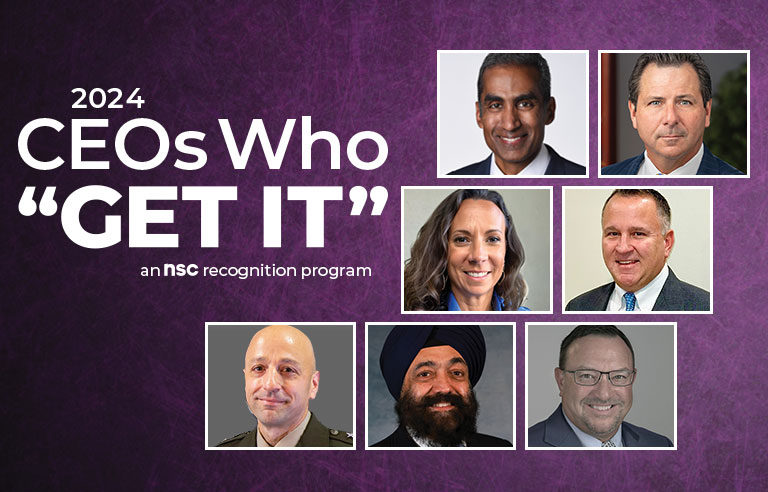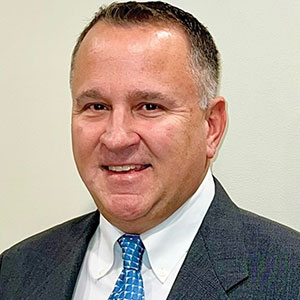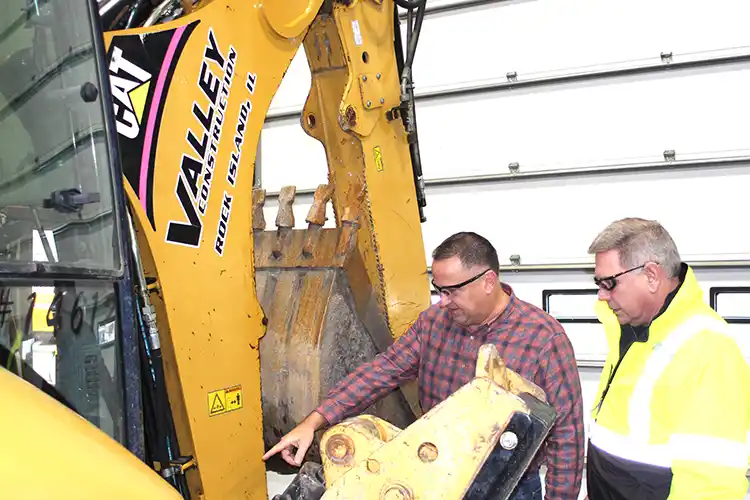2024 CEOs Who "Get It"


Greg Hass
PresidentValley Construction Co.
Rock Island, IL
Valley Construction was founded in 1925 in Davenport, IA, as a small gravel sidewalk construction company. Nearly 100 years later, the company has ventured into large scale heavy civil construction. Valley performs interstate asphalt and concrete paving, underground water and sewer utilities, commercial and industrial buildings, demolition, and earthwork. It also specializes in construction in the nuclear and railroad industries.

Describe your personal journey to becoming a CEO who “gets it.”
My personal journey to becoming a CEO who “gets it” has been an ongoing process of learning and growing. It began when I was first hired at the company, where I quickly realized that safety was not a core value in our industry. Even within our own company we experienced numerous preventable incidents and fraudulent claims that caused costly losses. As I worked my way up from being a field worker, I noticed unsafe practices and watched other workers get hurt. Later in my career, when I was in upper management, our industry was experiencing a high rate of serious or fatal incidents in our same geographical work area. Luckily, it didn’t include any of our employees. At my direction, our company switched to a proactive approach. We jumped in with both feet and hired a safety professional to cut – and work toward eliminating – any future losses and to, hopefully, prevent any injuries or a loss of life.
My understanding of safety grew more as I worked with our new safety manager to develop policies and procedures that would ensure everyone went home safely and in one piece each day. We also worked to totally revamp and change our culture into a safety-first mindset. Eventually, we formed a safety committee with members from a broad range of company departments and work types to help give us a second set of eyes on our program and get complete buy-in. With the implementation of our safety programs and prevention, we’ve gone from being a firm with a high rate of incidents to virtually zero incidents year after year.
Why is safety a core value at Valley Construction?
Safety has not always been a core value within our company. In the early 1990s, we took safety on in full force and made it a core value. At this time, there were too many workers’ compensation claims and preventable losses, which had to be eliminated. A lot of these claims were later determined to be either fraudulent or preventable. As such, an ever-climbing experience modification rate, lost workdays and rising premiums necessitated a change in our approach toward safety.
We have since taken great steps to ensure everyone goes home safely at the end of their workday by empowering employees and giving them a say in their own safety (through safety committees), as well as encouraging hazard recognition through tools such as safety pre-hazard analysis at the beginning of each day. We also start every meeting or event with an emphasis on safety (look ahead meetings, company kickoff events, etc.). This is done not only for compliance purposes, but also serves as a reminder that policies are written “in blood.” Thus, providing motivation for everyone not to cut corners – even when no one is watching them.
Taking care of employees’ well-being has become part of how we operate. Having clear policies regarding worker rights to a safe environment all the way up to making sure everyone understands why following those rules should remain a top priority even without supervision present all go hand in hand toward achieving better outcomes when it comes down to ensuring overall workplace health and safety.
What’s the biggest obstacle to safety at Valley Construction?
Our subcontractors and suppliers are an integral part of our construction projects, but it’s not always guaranteed that they’ll adhere to the safety practices we advocate for. Trying to find companies to contract with that follow our core safety values sometimes can be an obstacle to our safety milestones and goals. To ensure compliance with OSHA and American National Standards Institute guidelines, as well as our own safety regulations, we’ve incorporated provisions into all our subcontracts requiring strict adherence to these standards. Despite this measure, complacency can be a concern with these companies that are not 100% safety driven.
To address this issue effectively requires more than just contractual agreements; it necessitates consistent reinforcement of safety protocols through reminders, coaching sessions and pre-project planning meetings where expectations are clearly outlined prior to commencement. In addition to these measures, we also make sure that everyone involved in each project knows our strict stance and commitment to safety. Unsafe workers – and even companies – who don’t want to follow our protocols and “work safe” mentality are also removed from our jobsites.
How do you instill a sense of safety on an ongoing basis?
Constantly measuring safety in the workplace is paramount to a successful business. Employers must ensure their employees are safe from potential harm while on the job, and there are several initiative-taking steps our company takes to do this. One of these steps is looking for warning signs that could indicate a problem before it becomes an injury or loss. Examples of such indicators include monitoring for personal protective equipment compliance, such as eye and hand protection, full jobsite safety inspections for compliance, and tracking our loss rates, along with any temporary reassignments of duties tied to losses. Keeping a good eye on our EMR also helps as a key indicator as to how we are succeeding with safety.
Although these initiative-taking measures are important in keeping workers safe on the jobsite, one area where improvement is needed is getting everyone’s buy-in when it comes to taking safety to the next level. When your company has one of the lowest EMRs in the industry, incidents don’t happen and you experience zero losses for a work season, so employees tend to sometimes think that the work is done. As a company, we have always believed that safety has no end, and that we can always do more and constantly adapt as our world and environment changes to stay safe.
What roles do off-the-job safety, mental health and well-being play in Valley Construction’s overall safety program?
We believe that our safety culture and mindset at work carries home each day with our employees. If you’re safe in our shop, hopefully you’re safe in your own garage at home. We also preach that a good physical body and healthy mind while away from work benefits everyone the next day at work. Our company also offers employee assistance programs for any type of after-hour issues that may arise with our workforce. When suicides were high in our industry a few years ago, I gave out my cellphone number to all our employees and told them to call if they ever needed someone to talk to during troubling times. Any loss of one of our teammates is a loss to the entire team. Keeping a sharp-minded, well-fit and happy workforce is a good recipe for success.
Post a comment to this article
Safety+Health welcomes comments that promote respectful dialogue. Please stay on topic. Comments that contain personal attacks, profanity or abusive language – or those aggressively promoting products or services – will be removed. We reserve the right to determine which comments violate our comment policy. (Anonymous comments are welcome; merely skip the “name” field in the comment box. An email address is required but will not be included with your comment.)


